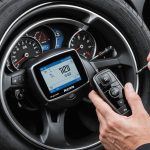Importance of Maintaining the Belt Drive System
The belt drive system is essential for the performance of any motorcycle, especially the Harley-Davidson Softail Slim. It acts as the critical link transferring power from the engine to the wheels. Proper belt drive maintenance ensures that this system functions smoothly, enhancing your bike’s overall performance and longevity.
Regular maintenance of the belt drive involves several key benefits. Firstly, it prevents premature wear and tear, ensuring the bike operates at its peak efficiency. A well-maintained belt drive minimizes friction, which conserves energy and improves fuel efficiency. It also lessens the chances of unexpected breakdowns, reducing the inconvenience and cost associated with urgent repairs.
In the same genre : Ultimate carburetor cleaning and tuning handbook for your kawasaki kz1000: expert tips for peak performance
Neglecting the maintenance of the belt drive can lead to dire consequences. Without regular checks and adjustments, the belt may wear out faster, leading to a loss in bike performance or even complete drivetrain failure. In extreme cases, severe damage to other critical components may occur, posing safety risks to the rider.
In short, prioritising belt drive maintenance not only prolongs the life of your Harley-Davidson Softail Slim but also ensures a smooth and secure riding experience. Embrace this simple yet effective measure to sustain and enjoy your motorcycle’s optimal performance.
In parallel : Elevate your motorcycle style with our custom sticker kits
Best Practices for Belt Drive Maintenance
To ensure your Harley-Davidson Softail Slim performs optimally, follow these crucial maintenance tips. Regular inspections of the belt drive system are fundamental. Aim to perform checks every 5,000 miles, or more frequently if you ride in dusty or wet conditions. Consistent evaluations help identify potential issues before they escalate.
Proper cleaning is also vital. Use mild soap and water to clean the belt, avoiding harsh chemicals that could degrade the rubber. After cleaning, ensure the belt is thoroughly dried before taking further steps. Although the belt drive systems are typically dry, ensuring no water lingers is key to preventing rust and corrosion in other related components.
Lubricating the belt isn’t necessary, as most modern belts are designed to function without it. However, if any metal components show signs of wear, a silicone-based spray can be beneficial. This also aids in performance enhancement, extending the system’s lifespan.
Finally, proper tensioning significantly impacts your bike’s performance. Maintain the recommended belt tension, usually around 10 to 12 pounds of force for Harley models. A simple gauge can assist in this endeavour, ensuring optimal tension that neither causes excessive wear nor slips. Regular attention to these practices ensures a reliable, efficient ride.
Common Issues and Troubleshooting
Maintaining the Harley-Davidson Softail Slim’s belt drive system involves addressing potential issues before they escalate. Recognizing wear and damage indicators is the first step in effective troubleshooting. Look for visible fraying, cracks, or missing teeth on the belt, as these signs suggest imminent failure. Additionally, listen for unusual noises like squealing or slapping during rides, which often indicate tension or alignment issues.
Typical problems with the Softail Slim’s belt drive include misalignment and loss of tension. Both issues can lead to increased wear, reduced performance, and potential breakdowns. A misaligned belt may drift to one side, while improper tension manifests as excessive slack or excessive tightness, impacting the ride’s smoothness and efficiency.
To resolve these issues, start by adjusting the rear axle to correct alignment. This simple, yet precise adjustment ensures the belt runs true and maintains longevity. For tension-related problems, utilize a tension gauge to achieve manufacturer-recommended levels. Properly tensioned belts optimize performance and minimize wear.
Regular inspections and timely interventions in troubleshooting can extend the life of the belt drive system. Keeping an eye on these common problems and addressing them promptly will ensure a safer, more reliable riding experience on the Harley-Davidson Softail Slim.
Recommended Tools and Products
Selecting the right maintenance tools and belt drive products is crucial for keeping a bike’s performance at its best. Essential tools for DIY maintenance include a quality tension gauge, Allen wrenches, and torque wrenches. These instruments ensure precise adjustments, crucial for maintaining the belt’s tension, alignment, and overall functionality.
In terms of cleaning products, opt for mild, non-abrasive soaps to avoid degrading the belt material. Pair this with a soft-bristled brush for effective removal of dirt and debris. When scrubbing the belt, ensure the application of gentle pressure to avoid damaging the belt’s rubber material.
While modern belts typically don’t require lubrication, if metal components show signs of friction or wear, a silicone-based spray can prove beneficial. It provides a protective layer, enhances performance, and extends the system’s longevity.
Evaluating aftermarket parts can also be worthwhile. Enhanced pulleys or tensioners specifically designed for the Harley-Davidson Softail Slim offer improved durability and efficiency. Investing in these upgrades can provide long-term benefits and optimize your bike’s belt drive system.
By investing in these recommended tools and products, you stand to significantly elevate your motorcycle’s performance and maintain it in prime condition.
Frequency of Maintenance Checks
Establishing a maintenance schedule is vital for the longevity and performance of your Harley-Davidson Softail Slim. Regular belt drive inspection helps to catch minor issues before they escalate into significant problems. Aim to inspect the belt every 5,000 miles, adjusting more frequently if you frequently ride in harsh conditions, such as rain or dust.
Seasonal considerations also play a crucial role in scheduling maintenance. For instance, if you live in an area with distinct seasons, remember that temperature fluctuations can impact belt tension and wear. Therefore, increase inspections in extreme weather periods, ensuring your bike remains reliable year-round.
Consistently monitoring wear and tear is imperative. Over time, even a well-maintained belt can exhibit signs of deterioration, such as cracks or fraying. Keep an eye on the belt’s surface and teeth to gauge its condition accurately.
Regular logs of inspections and adjustments can aid in tracking the belt’s lifecycle. By adhering to a structured maintenance schedule, you not only extend your motorcycle’s lifespan but also optimize riding efficiency. Staying proactive with these checks ensures that your bike continuously operates at its best, delivering the performance you expect.
Performance Optimization Tips
Aiming for performance optimization enhances the overall efficiency of your Harley-Davidson Softail Slim. Implementing the right modifications can significantly amplify your ride experience. Consider upgrading the pulleys to higher-quality alternatives. These modifications contribute to smoother rides and enhanced belt lifespan.
For improved belt drive efficiency, focus on fine-tuning through precise adjustments. Maintaining optimal belt tension ensures energy is transmitted effectively, avoiding unnecessary strain on components. Always use a tension gauge for accuracy, as incorrect tension might lead to excessive wear or slippage.
Riding style directly affects belt wear. If frequent acceleration or sudden stops are common, anticipate quicker wear. Adapting a smoother riding style extends the belt’s lifespan and promotes system efficiency. Additionally, monitoring riding conditions and adapting accordingly ensures prolonged belt health.
Investing in aftermarket parts amplifies performance. Look for enhancements like advanced tensioners or premium belts designed for the Softail Slim. These components are engineered to offer greater durability and consistency.
Performance optimization is multifaceted, involving both mechanical upgrades and behavioral adaptations. By incorporating these tips, you improve efficiency and extend the lifespan of your bike’s belt drive system.









